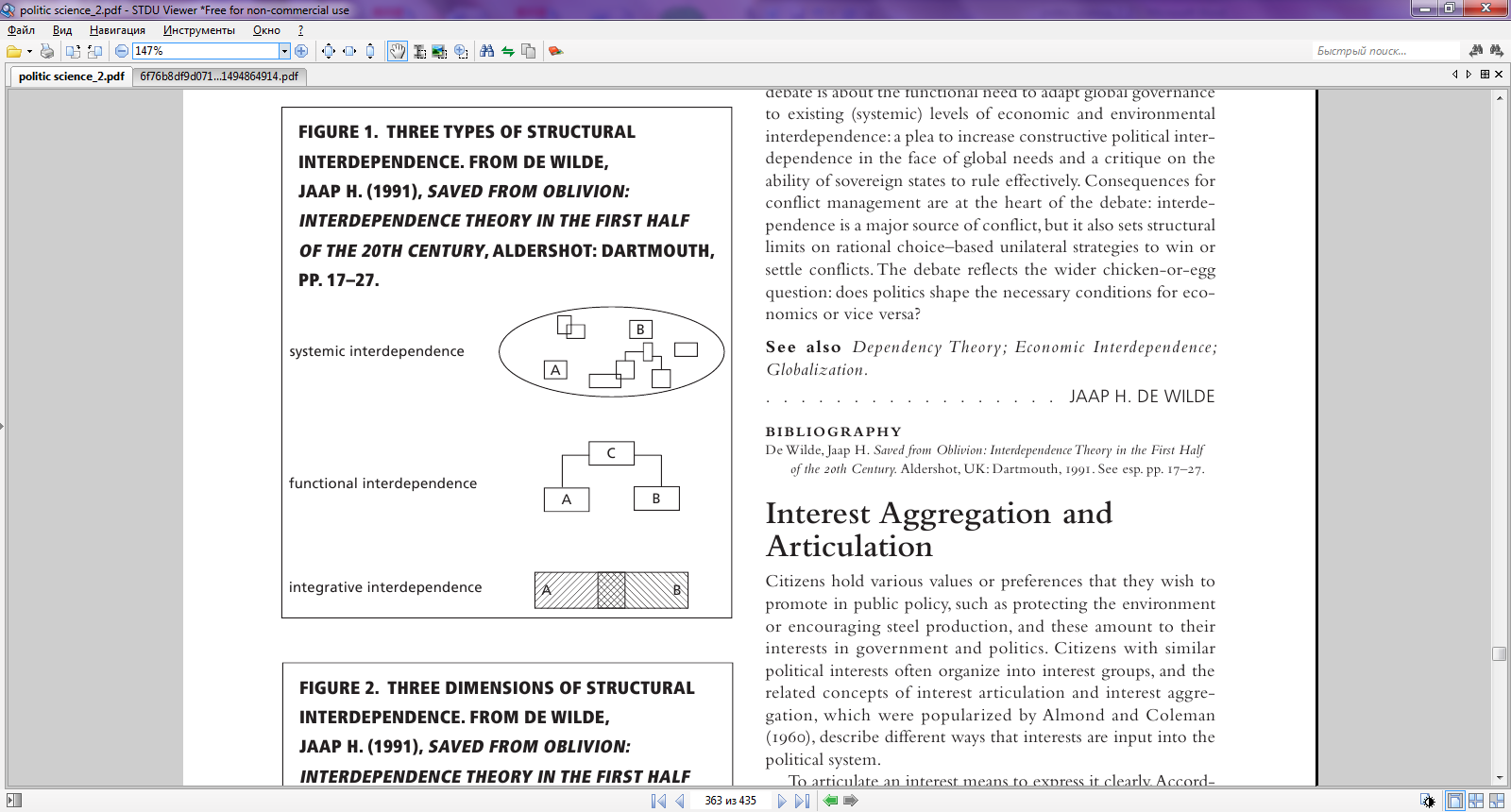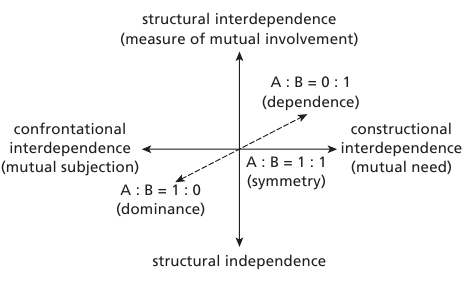Interdependence refers to independent social actors who are structurally affected by one another’s behavior. The actors are involved in each other’s affairs (functional or integrative interdependence), or they are part of the same system (systemic interdependence) (see Figure 1). Interdependence can be operationalized into a three-dimensional concept, which expresses how given actors are mutually affected by one another’s behavior (see Figure 2). The first dimension concerns the degree of mutual involvement (the existential value of the relationship for the actors).The second dimension concerns the character of mutual involvement: confrontational versus constructional. The third dimension concerns the (a)symmetry of mutual involvement: the distribution of costs and benefits.
Figure 1. Three Types Of Structural Interdependence. From De Wilde, Jaap H. (1991), Saved From Oblivion: Interdependence Theory In The First Half Of The 20th Century, Aldershot: Dartmouth, Pp. 17–27.

Figure 2. Three Dimensions Of Structural Interdependence. From De Wilde, Jaap H. (1991), Saved From Oblivion: Interdependence Theory In The First Half Of The 20th Century, Aldershot: Dartmouth, Pp. 17–27.

The debate about global economic and political interdependence dates back to the late nineteenth century. It reemerged (without awareness of the earlier discourse) in the 1970s, when environmental interdependence was also emphasized, and again in the 1990s. This last round fits the wider context of the present globalization discourse. Much of the debate is about the functional need to adapt global governance to existing (systemic) levels of economic and environmental interdependence: a plea to increase constructive political interdependence in the face of global needs and a critique on the ability of sovereign states to rule effectively. Consequences for conflict management are at the heart of the debate: interdependence is a major source of conflict, but it also sets structural limits on rational choice–based unilateral strategies to win or settle conflicts. The debate reflects the wider chicken-or-egg question: does politics shape the necessary conditions for economics or vice versa?
Bibliography:
- De Wilde, Jaap H. Saved from Oblivion: Interdependence Theory in the First Half of the 20th Century. Aldershot, UK: Dartmouth, 1991. See esp. pp. 17–27.
This example Interdependence Essay is published for educational and informational purposes only. If you need a custom essay or research paper on this topic please use our writing services. EssayEmpire.com offers reliable custom essay writing services that can help you to receive high grades and impress your professors with the quality of each essay or research paper you hand in.
See also:
- How to Write a Political Science Essay
- Political Science Essay Topics
- Political Science Essay Examples





